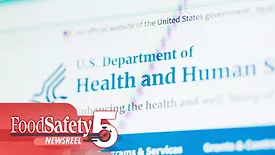Home » Keywords: » CDC
Items Tagged with 'CDC'
ARTICLES
A Roadmap to Deliver Food Safety Excellence in Retail Foodservice
Food safety management of foodborne disease risk must go beyond regulatory compliance
October 15, 2025
Never miss the latest news and trends driving the food safety industry
eNewsletter | Website | eMagazine
JOIN TODAY!Copyright ©2025. All Rights Reserved BNP Media.
Design, CMS, Hosting & Web Development :: ePublishing












